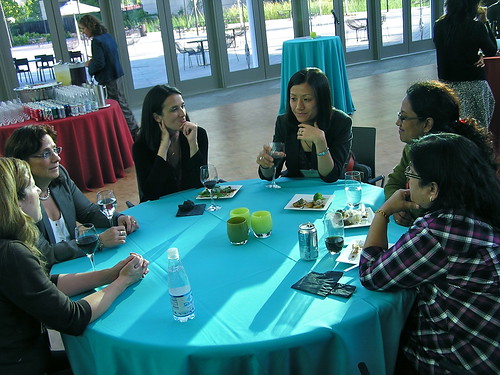I believe these apply very well to building adult education / professional development resources. As more educational resources go online being mindful of the learner is what will differentiate the resources. I see each of these four applied to learner satisfaction in the following ways;
- Products - the products (learning resources) need to be of high quality with good learner value. The brand (institution) associated with the products is as important as is product availability. All products should provide 7 X 24 access and this will grow in importance as more people study through-out their waking hours. Having access to high quality resources will attract people to the learning resources.
- Premises - the premises (whether online or physical) need to be easily accessible and very understandable. Access is also about finding what you need, quickly. I increasingly believe that good (subject specific) search is one of the keys to accessibility. Once the resources have been found they should be very usable and this usability should be intuitive. The resources should be interesting and engaging not only from a content perspective, also from a rich-media perspective. Usability studies would be important here. The premises (again, whether online or physical) should be very well serviced. This means they are clean and well organized, guides (virtual or otherwise) are available to assist learners find their way. The premises is often updated taking advantage of the latest technologies that will assist the learner pedagogically.
- Processes - the processes need to be complete from the learner perspective. The learning journey needs to be well defined and communicated and include the assessment / accreditation part of the journey. The learning processes need to be implemented so they suit (and adjust to) each individual learner and their learning style. The learning environments need to be continuously improved as more learners engage and complete processes. Intelligence needs to be built into the system so outcomes, learner success and depth of learning can be measured. These measures will offer guidance and the ability for processes to be improved and refined. A well articulated learning process combined with solid assessment / accreditation and continuous improvement will keep learners engaged and retain many of them as they continue on their life-long learning journey.
- People - People are key to retaining and engaging the learner. All people who engage with the learner (regardless if they are faculty, staff or peers) need to be very aware of peoples individual and group needs and adjust the products and processes to accommodate. With modern learning environments this takes technical skill, and this technical skill should not be limited to hardware and software it should also include pedagogy. For in my mind, good pedagogy is a technology. All people involved in learning must work as a team for everyone's interests, and everyone's interests must be well articulated. Everyone benefits when people learn... not only the learner, also the faculty and staff.
Is all this possible? Absolutely!
- We were always looking for the products that could have improved quality and would further enhance brand. Having products available 7 x 24 helped the learner greatly as we increased quality and access. Federated and faceted search assists greatly with easing access to products.
- Most of the projects focused on online and blended learning where we focused on user experience and ease of access. Having access improved within our partnership model(s) also allowed the learners access to products of a higher quality they didn't previously have access.
- Taking the learning beyond the content and building systems that assist in the measurement of learning and provide opportunities for peer mentorship is where we increase the focus as we build learning environments. Building learning environments where people join community and return on a regular basis enhances life-long learning.
- Flattening the organization, empowering front-line staff and taking a stewardship approach to learning engages people. I believe the best learning environments are peer based learning environments that use inquiry models as their foundation and leverage the technologies to encourage peoples participation and engagement.

